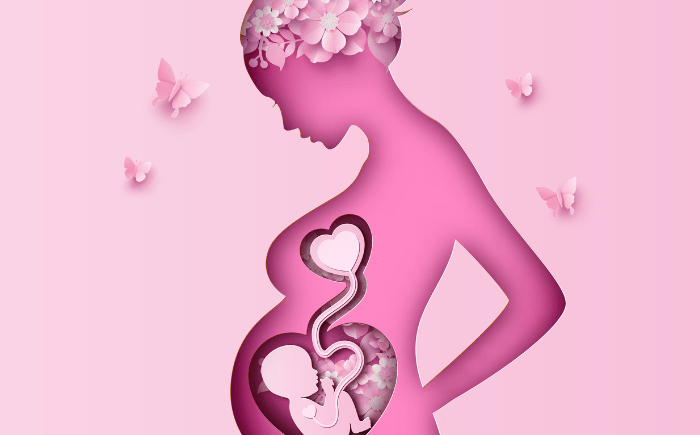Maternal Mortality

Maternal mortality is a critical problem in public health that affects women worldwide, and the rate has increased post-COVID. In the US alone, the maternal mortality rate for 2021 was 32.9 deaths per 100 000 live births, up from 23.8 in 2020 and 20.1 in 2019. This mortality refers to a woman dying from any reason connected to or aggravated by the pregnancy or within 42 days of the termination of the pregnancy. According to estimates from the World Health Organization (WHO), over 295,000 women die worldwide each year from problems related to pregnancy and delivery, and unfortunately, 94% of these deaths take place in low- and middle-income nations. This indicates that a woman passes away from pregnancy or childbirth-related problems every two minutes. Although the vast majority of these fatalities take place in underdeveloped nations, maternal mortality is still a serious problem in industrialized nations. Progress is being made to reduce maternal mortality rates globally, but there are still many challenges that women face during pregnancy and childbirth, both in developed and developing countries.
The higher number of maternal deaths during the past recent years, is due to the fact that the COVID pandemic disrupted health services, reducing access to maternal healthcare, and limiting mobility due to lockdowns and travel restrictions. Reduced staffing and resources for maternal healthcare due to hospitals being overwhelmed with COVID-19 patients has further compounded the issue. On top of this, the additional fear of pregnant women contracting COVID-19 in healthcare settings has led to delayed diagnosis and treatment of pregnancy and childbirth complications.
Many women even in developed nations still lack access to high-quality care during pregnancy and childbirth. This is due to the fact that there aren’t enough healthcare providers, particularly in rural locations, or to lack of proper transportation to the healthcare facilities nearby. Sadly, there are racial and ethnic differences in healthcare access and outcomes, with non-caucasian women in the US and UK experiencing disproportionately high rates of maternal mortality.
Another challenge is the increasing number of cesarean sections (C-sections) being performed. Although C-sections can be a life-saving procedure, they are overused in many developed countries. Childbirth is often seen as a medical event, rather than a natural process, which contributes to the overuse of C-sections. C-sections can lead to more complications for both the mother and the baby, an increase in healthcare costs, and ultimately increases the maternal mortality rate.
In contrast, when it comes to maternal mortality, underdeveloped nations have unique difficulties. The main issue is that not everyone has access to high-quality healthcare. Women give birth at home frequently in impoverished nations without the aid of trained delivery attendants, such as midwives, which can result in potentially fatal complications. These underdeveloped nations’ healthcare systems frequently lack the tools, and materials, and have a shortage of qualified staff members who can offer adequate care for pregnant women.
Furthermore, pregnant women in developing nations face serious difficulties such as poverty, starvation, and illiteracy, which can also negatively affect maternal health and raise the risk of maternal death. Individuals who are underprivileged or undernourished might not have access to sufficient medical treatment or healthy nourishment during pregnancy, which can cause complications during childbirth.
Many efforts can be made to lower maternal mortality rates on a worldwide scale. First and foremost, there needs to be a focus on expanding access to high-quality healthcare for all women, irrespective of their socio-economic situation or place of residence. This can be accomplished by making investments in the infrastructure of the healthcare system, training more healthcare professionals, and expanding access to family planning and contraception services. Second, women should be more aware of the potential negative effects of medical procedures performed during childbirth, such as C-sections. Finally, increasing maternal health outcomes depends on tackling social determinants of health such as poverty, hunger, and illiteracy.
Maternal mortality is a complex issue that affects women in both industrialized and developing nations. There are still numerous issues that need to be resolved to reduce maternal mortality, but we should work toward lowering maternal mortality rates by making sure that all women have access to safe and healthy pregnancies and by improving access to high-quality healthcare, reducing unnecessary medical interventions, and addressing the social determinants of health. The COVID pandemic also teaches us a lesson that we must not forget that during a pandemic pregnant women may be scared to deliver their babies in environments that do not offer the safety that mothers are looking for when it is time to deliver their infant. Hospitals that are filled with patients that are affected by the pandemic are not the ideal safe place a mother needs, so we should plan for future pandemics to have midwife services available to those women, or to have small clinics, not connected to hospitals, where women can safely deliver their babies.
REFERENCES
- World Health Organization. (2019). Maternal mortality. https://www.who.int/news-room/fact-sheets/detail/maternal-mortality
- United Nations Population Fund. (2019). Maternal Health. https://www.unfpa.org/maternal-health
- United Nations. (2015). Sustainable Development Goals: Goal 3: Ensure healthy lives and promote well-being for all at all ages. https://www.un.org/sustainabledevelopment/health/
- Say, L., et al. (2014). Global causes of maternal death: a WHO systematic analysis. The Lancet Global Health, 2(6), e323-e333.
- World Health Organization. (2016). Strategies toward ending preventable maternal mortality (EPMM). https://www.who.int/maternal_child_adolescent/topics/maternal/epmm/en/
- United Nations Population Fund. (2017). The State of the World’s Midwifery 2017: The Power of Midwives. https://www.unfpa.org/swop-2017
- Ahmed, S., et al. (2015). Challenges in reducing maternal mortality in Pakistan: the need for focus on skilled attendance at delivery. PloS One, 10(4), e0119190.
- Villar, J., et al. (2016). Maternal and neonatal individual risks and benefits associated with caesarean delivery: multicentre prospective study. BMJ, 354, i4711.
- Campbell, O. M., & Graham, W. J. (2006). Strategies for reducing maternal mortality: getting on with what works. The Lancet, 368(9543), 1284-1299.
- Kassebaum, N. J., et al. (2016). Global, regional, and national levels of maternal mortality, 1990–2015: a systematic analysis for the Global Burden of Disease Study 2015. The Lancet, 388(10053), 1775-1812.
- Lancet Global Health. “Impact of the COVID-19 pandemic on maternal and child health.” 2021. https://www.thelancet.com/journals/langlo/article/PIIS2214-109X(21)00090-2/fulltext

